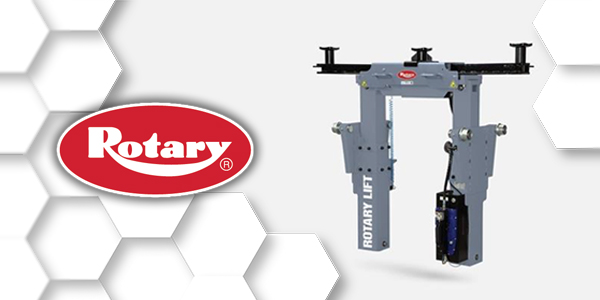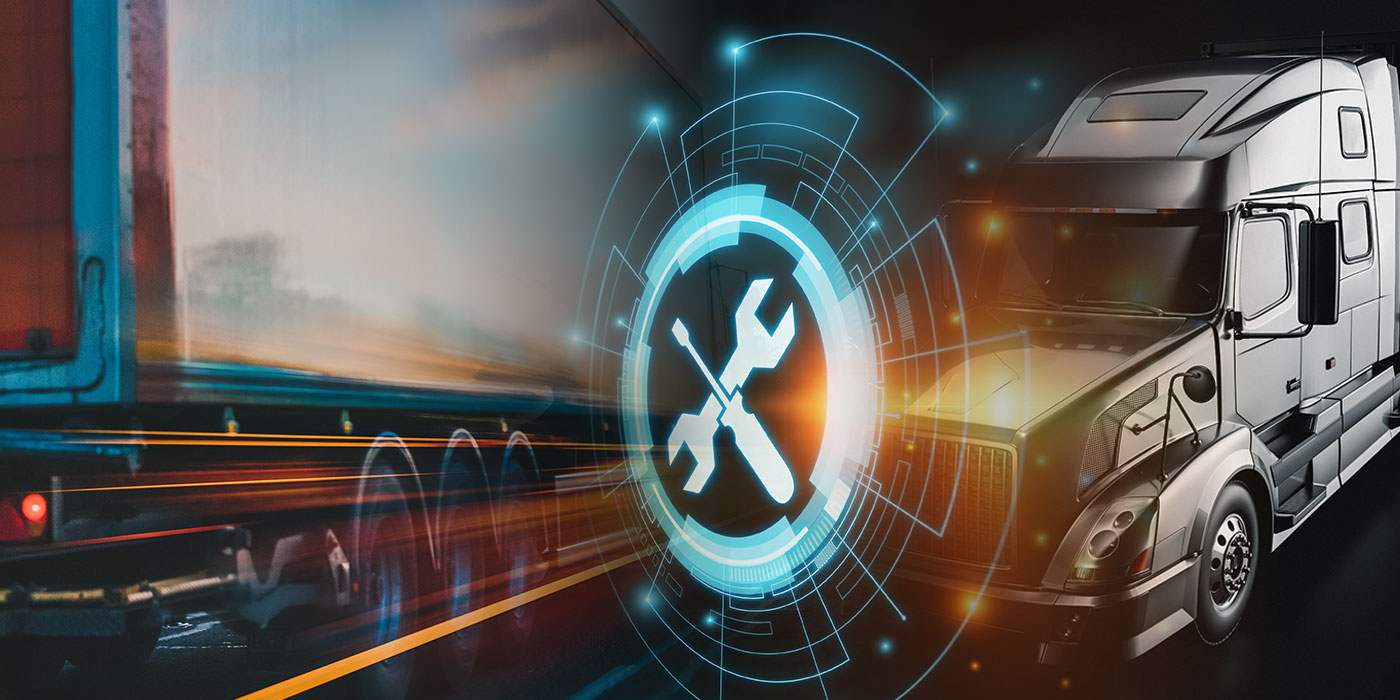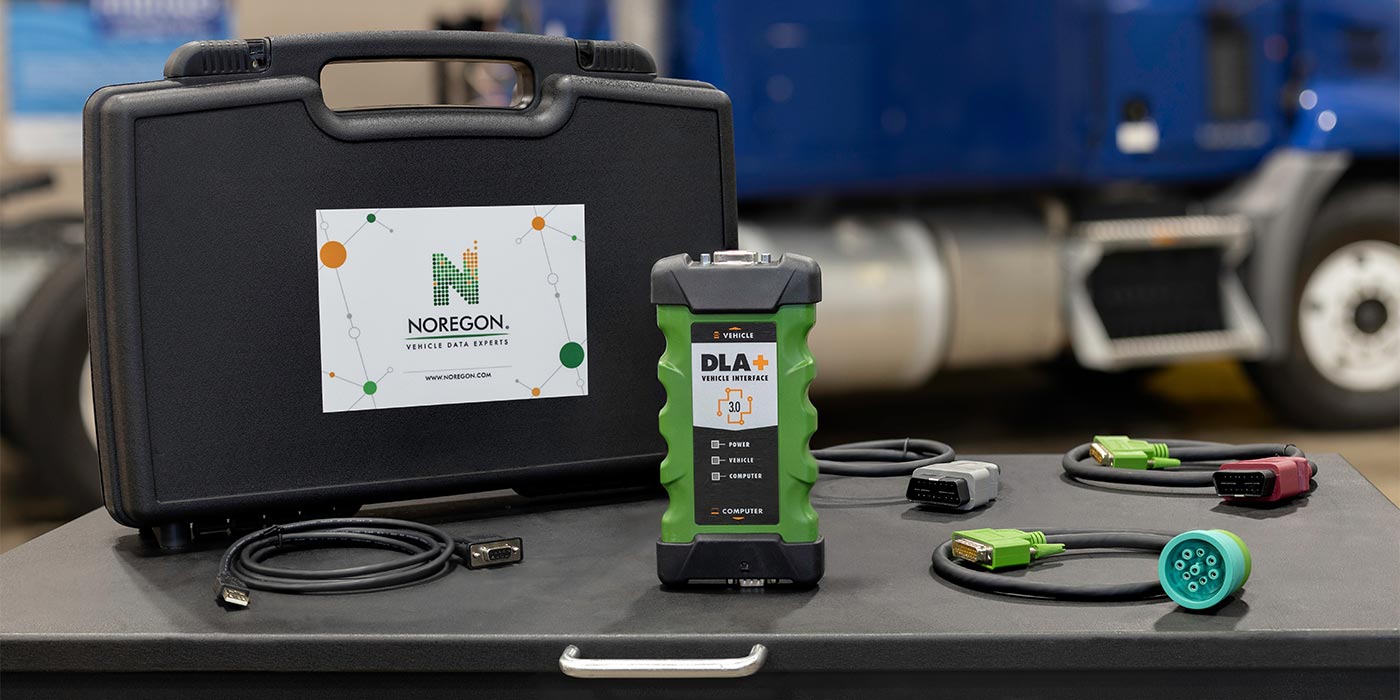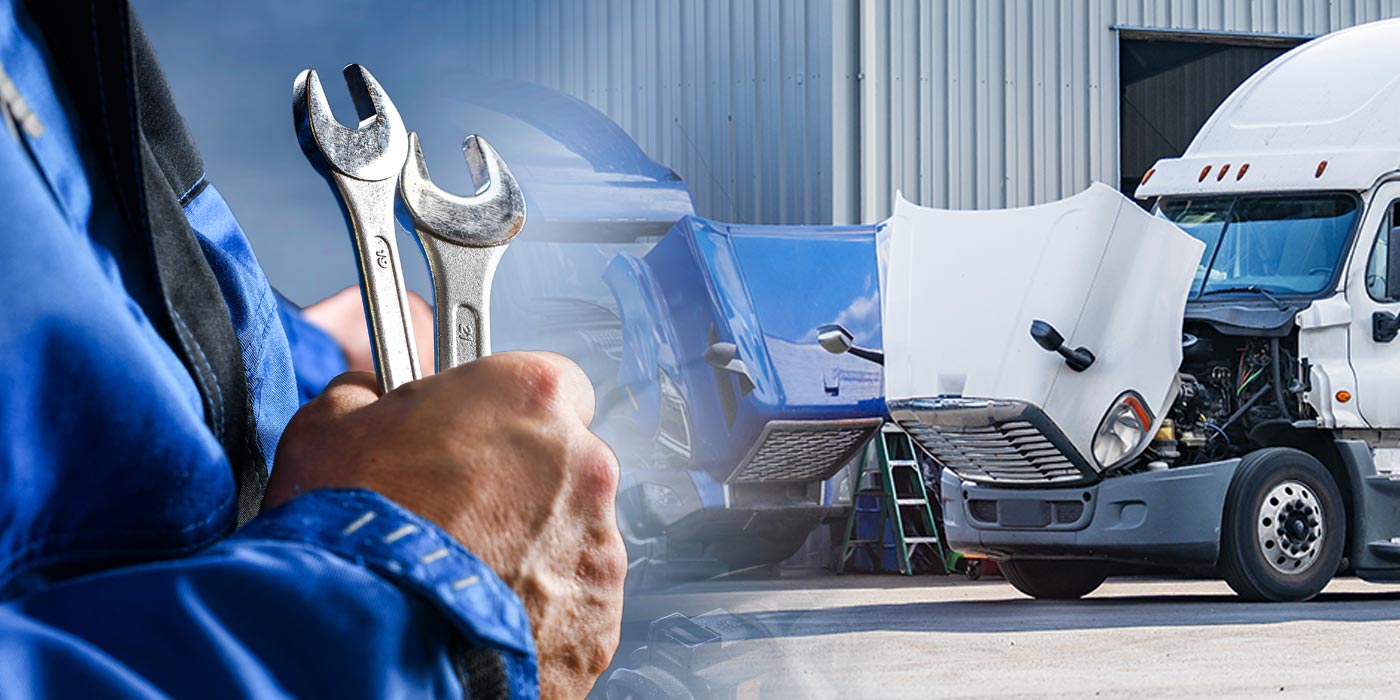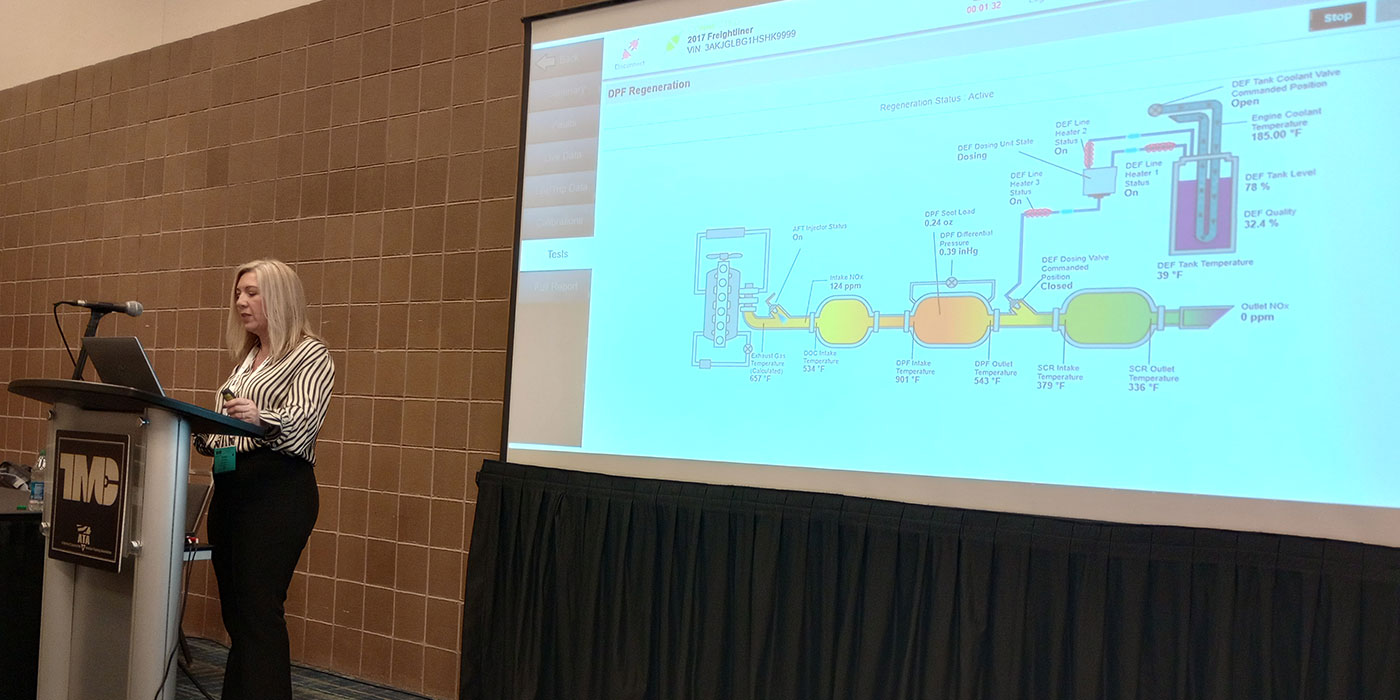
Analyzing truck data to improve your service operation is a lot like playing connect the dots. You have to draw the lines between hard-braking data and, potentially, tire or brake pad wear information. The challenge is that the picture isn’t always clear. Sometimes your line between data points descends down the data analysis rabbit hole or you end with something that looks more like abstract art than actionable analysis. Luckily, algorithms are getting smarter every day, and like any problem, you just need the right tool for the fix.
“Trying to analyze telematics data without advanced tools can be like drinking from a fire hose,” said Andrew Dondlinger, Navistar’s vice president and general manager of connected services. “There are too many data points changing at too high a frequency for a fleet service location manager to be able to understand and take action on them in a meaningful way. Aggregation of individual data points is the most effective way to understand vehicle health and the impact to uptime.”
If you already feel in over your head—don’t worry. This type of data analysis is typically the stuff of “early adopters,” but in today’s market, everyone should be considering the latest technology to stay one step ahead of the other guys.
“Basic telematics systems have been around for 30 years and the next level of features and functions are just beginning to emerge with most of the industry at an early adopter stage,” said Wes Mays, director of OEM solutions at Omnitracs. “Many of the largest fleets are providing some of these services to themselves and have been for some time. Mixed fleets, mixed engine models, different year models, make the analysis relatively complex. Providing a common platform through a single telematics supplier can greatly simplify a fleet or service manager’s job. In addition, having reliable repair information can greatly assist the technician to ensure the correct repair is performed the first time.”
If you’re looking to gain ground in the constant battle against truck downtime and streamline your service process using data that is probably already available to you, well, then you’re in luck. Fleet Service Technology is here to help kick start your data-driven service productivity.
So, how do we get started?
Great question. Step one: Start with your service issue pain points. Are your tire costs higher this year than last? Are you going through too many brake pads? Are you going to lose your mind if one more truck with an aftertreatment issue rolls into your shop? Narrowing your focus will help you isolate the data points that you’d want to tie into your service management platform. Generally, fault codes, odometer reading, battery information, engine hours and idle time should be on your radar, according to Scott Sutarik, associate vice president of commercial vehicle solutions at Geotab.
“Check engine lights are a reality that fleets and drivers deal with on a daily basis, but which faults are important and which ones aren’t?” he asked. “With thousands of fault codes, it’s not uncommon for a driver to ignore a high-severity fault code and continue driving. The end result could be anything from a de-rated tractor to a catastrophic engine failure.”
If you’re looking to dig deeper into your engine service causes, you might also want to consider tracking coolant temperature and level, and oil temperature and pressure trends.
“Today’s connected vehicle broadcasts a variety of data such as engine hours, braking severity, load factor and transmission top gear time that help fleets understand how their vehicles are being operated,” said Brian Daniels, manager of Detroit powertrain and component marketing. “Using telematics data to evaluate a fleet’s performance might seem straightforward but with the amount of data collected from the vehicles, it can be time consuming to gather and sort through all the information to find the data points needed to perform the analysis. Fleets are beginning to see the value in pre-analyzed trip-by-trip drive behavior, especially when provided with simplified explanations of how the truck has been driven and where there are opportunities for improvement.”
Again, it’s worth repeating: The data points you consider should be related to the service issue you’re hoping to solve, but expect there to still be unknowns when first faced with the information.
“The next level of error conditions may be much harder to correlate to a root cause,” Omnitracs’s Mays said. “That’s where extended fault monitoring may be able to interpret the engine codes to something that is actionable for the service manager.”
Today’s analytics systems are evolving to the point where they will be able to correlate driving behavior such as braking habits with brake pad usage or other service problems.
“Through telematics, fleet service location managers will see the impact of the behavior in maintenance and repair costs,” Navistar’s Dondlinger said. “Harsh braking and acceleration is directly correlated to drive line repairs such as u-joint, transmission and differential failures, along with excessive clutch and brake wear. Comparing the repair order information against telematics driver behavior data, the fleet will find that the vehicles subjected to the impacts of abhorrent driving behavior, will have higher repair and maintenance costs.”
“Correlating fault code data is time consuming for any size of operation,” Mays said, “but using predictive diagnostics or predictive maintenance can take much of the workload off the service manager.”
Working with your fleet’s telematics provider will help uncover the hidden side of truck data and put you at the front of the line for when new features roll out.
“The right telematics partner can help consult with service managers to identify key problems, figure out or create the right solution and help implement the action plans,” said Eric Witty, vice president of product management at Trimble Transportation Mobility. Remember that your telematics service providers are the data experts so that you don’t have to be.
“The data exists in the dispatch system, maintenance systems and telematics systems accessible via our data warehouse and business analytics solutions to create these relationships and trends. The tools can also develop relationships of brake wear based on routes and load weights,” said Scott Vanselous, Trimble Transportation executive vice president of the supply chain. “The maintenance systems have algorithms to determine inventory replenishment reorder points based on usage history and campaigns.”
Connecting people, not just data
Acting on the insight gleaned from data trends means making sure the key people involved in the service process are communicating. Within the service process, that most often means you, the service manager, your fleet manager and the technician on the shop floor. Yesterday you might have forwarded on a spreadsheet of information; today, it’s all about data integration.
“Service providers on a service relationship management [SRM] platform get complete access to service history and details,” said Rob Bradenham, senior vice president of commercial vehicles at Decisiv. “Integrating telematics into the SRM platform enables more complete data in context for service events, driving faster diagnostic with faults and pre-populated repair plans, higher fix-right-first-time, greater efficiency, as well as potentially solving issues before a breakdown and avoiding the increased cost and downtime of unplanned events. This enables a better customer experience, greater throughput in the shop and greater efficiency.”
“With an integrated solution, the service manager doesn’t need to provide the key data,” Trimble’s Witty added. “Instead, the telematics solution can be configured to automatically provide visibility of key data points to the various roles within fleet management, connecting maintenance data and fleet operations data seamlessly and automatically.”
That goes for all the data involved in the service process—from the telematics fault code data and service repair order information to the scan tool diagnostic info.
“Within a service shop, information typically comes from one of three places: telematics, customer feedback, or scan tools or diagnostics in the actual shop,” Geotab’s Sutarik said. “Fleets should have a cohesive maintenance system as it allows technicians to easily input and view historical data. Telematics can feed into a maintenance system like TMW Fleet Maintenance Software or Dossier Systems Fleet Software—two software programs Geotab integrates with for instance.”
“We receive eDVIR information electronically from the telematics system,” TMW Systems’ Vanselous said, explaining the web of integrated service data. “If an inspection issue is identified, a work pending order is automatically created for additional diagnostics and potential repair. When work is performed, the inspection issue is automatically cleared in the telematics system.”
Vanselous went on to explain that service managers receive truck location data and a geofence (a digital perimeter defined on a map) around a terminal or shop can be used to alert service manager the equipment has entered the terminal or shop and pending work can be performed.
Working together within your fleet will also allow you to improve operations going forward with the aim of reducing problems before they happen.
“A fleet manager wants to maximize the safe up time of their vehicles while the fleet service manager needs to determine what needs to be repaired,” said Mark Wallin, vice president of product management at Verizon Connect, “not only does fleet management software inform both parties on the issue at hand, it can also remind you when scheduled maintenance is due, be aware of early indicators to avoid breakdowns and costly repairs, and have visibility into service center visits and time on site. All this information can be delivered directly to your mobile or email inbox.”
When looking into your data solution’s integration options, Navistar’s Dondlinger recommended that fleets consider an open-architecture system.
“Allowing all vehicle makes and numerous telematics providers to be aggregated and reported in one dashboard allows both managers the visibility required to reduce costs and improve uptime,” he said. “A location in isolation may think they are doing great, but comparing them to the rest of the organization might tell a different story. Aggregation can be a challenge as fleets grow, especially when they are using different telematics providers and different equipment across their fleet.”
Dispatching the solution
Integrating service data into your fleet’s operational systems can allow you to reap benefits beyond streamlining your service process. Your fleet’s dispatching center, for example, would likely want to know a truck’s service status as soon as possible.
“A good dispatch application has tactical features built in that will provide visibility and warn or prevent trucks from getting dispatched when scheduled maintenance is upcoming, a breakdown occurred, or the tractor is currently out of service because it is in the shop,” said Matt Ruth, TMW systems senior vice president of professional services. “This way a fleet manager knows exactly which trucks are or are not available now or in the near future so they can plan operations accordingly.”
Driver impact
While fuel efficiency and driver training is typically the realm of other leaders in your fleet, connected data gives you visibility into driver habits. Going back to the example of hard-braking behaviors increasing your brake service costs, it might be the case that you see those costs going up first and have to work with your fleet manager to determine the driver behavior and hand the wheel over to him for the corrective action.
“Vehicle performance data can help identify which vehicles and/or drivers that exhibit patterns that contribute to increased service events,” said Detroit’s Daniels, “and provide the training and information needed to help improve those driving behaviors as well as the fleet’s uptime.”
[Editor’s note: This story was originally published in Fleet Service Technology.]


